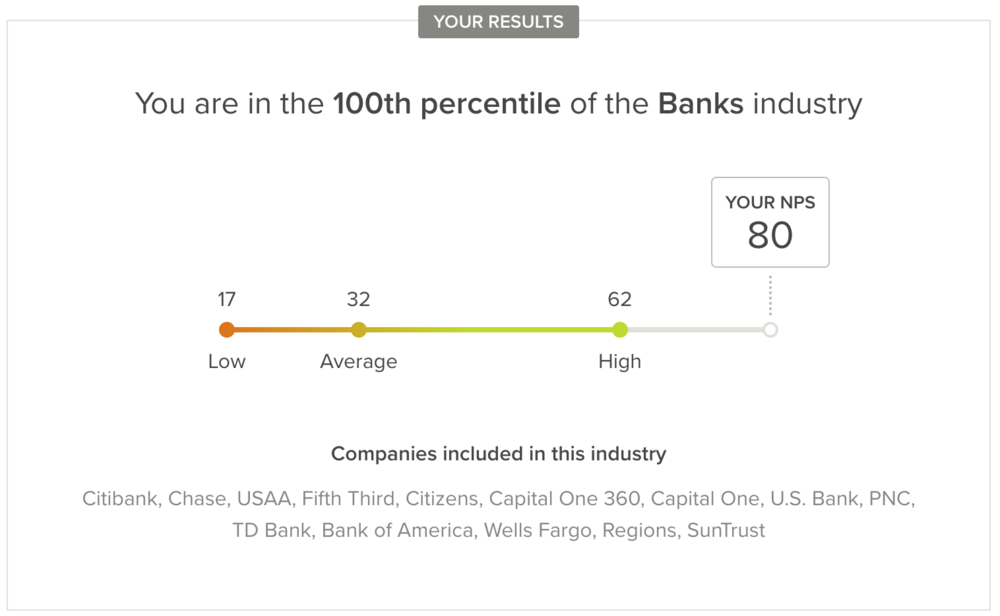If you’re an accountant or bookkeeper, there’s a great chance that business banking continues to plague your firm. Each month firms spend hours fixing bank feeds, navigating shared login credentials, or cleaning up messy data.
The reality is that client banking rarely cares that you have carefully curated the perfect tools and workflows for your firm. Banking software is outdated, the data is unreliable, and just obtaining access to client banking can be a battle.
Simply put, business banking isn't designed for the 21st century. Thankfully, your firm finally has options that can resolve these challenges and help you deliver more value to clients.
Webinar: Turn Your Business Into a Money-Making Machine
Unlock the secrets to transforming your business from a job into a profitable, cash-generating machine.
Register Now55% of SMBs changed banks in 2019
- 2019 PACE Findings: U.S. SMB Results
As business banking churn rates increase, you have the opportunity to take control of the narrative and get your clients standardized on a bank that works for them and your firm. Take Lance CPA Group as an example:
“At Lance CPA Group, Relay is our business bank account of choice. With Relay, it’s finally easy to collaborate with our clients on their banking. Between the direct feed with Xero and having access to our clients’ banking data, we save up to an hour a month per client. Using Relay gives us reliable bank feeds, access to bank statements and it accelerates reconciliation. It’s made life super easy for our practice!” - Josh Lance, Lance CPA Group
The flip side is that if you’re not in control, given the pace at which clients are changing banks, your whole portfolio could adopt new banks in the next 12-18 months. Those decisions could introduce more broken bank feeds, messy data, and login issues.
So how do you get your clients on the bank that works best for them and your practice?
Uncover the pain
The key to steering this conversation is to help surface the pain points your clients are dealing with. They have likely gotten used to these challenges and accepted them as reality without realizing there are alternatives.
Identify the 2-3 meaningful challenges your clients are facing and highlight that they don’t need to continue dealing with these issues. We always find that firms have a higher success rate starting the conversation with the challenges for the business owner, rather than the potential solutions.
Below, we share the most common reasons we’ve seen for small businesses changing or adding a new bank. Most of your customers are likely to fall into one or more of these buckets.
Fees & Customer Service
In 2019, the top two reasons businesses changed banks were unwanted fees, and poor customer service. If you identify a business bank with strong service and no fees, you’ll quickly strike a chord with most of your clients.
Relay is proud to be an industry leader in Net Promoter Score (NPS) and offer entirely no-fee business banking.

Financial Visibility & Cash Flow Surprises
Your bank balance is not your financial position. Yet for many business owners, it’s often the only indicator they rely on to understand their business.
Poor data leads to poor decision making. Consider a bank that lets your clients open as many checking accounts as they need, for free. They'll be able to put money aside for tax withholding, upcoming expenses, or re-investing in the business. These decisions shouldn't be guesswork. Unlimited free checking accounts make it real.
How are your clients managing expenses? What about bill pay? Often small businesses employ manual processes which can lead to cash flow surprises.
Identify banking options that provide out of the box expense management or automated bill pay. That way you’ll cut down on costly 3rd party solutions. The less steps a small business needs to take in order to get from A to B the better.
Look for a business banking option that can replace these clunky 3rd party solutions and solve multiple challenges for your clients.
Some helpful questions that may put this into focus for your clients:
How much of your bank balance is really available?
How much has your business spent this week?
What bills are outstanding vs paid?
Will your outstanding checks clear?
Technology & remote banking
Most of your clients can run their day to day operations from anywhere. Banking tends to be one of the few exceptions. Your clients are ready to embrace alternatives to visiting their local branch or using dated banking portals.
Thankfully, more modern banks have placed a renewed emphasis on enabling entrepreneurs to manage all their finances on the go.
Moreover, with more businesses moving all their operations entirely online, going to a bank branch has never felt so antiquated. Your clients will thank you when you help them move to a bank that never requires them to set foot in a branch.
Collaboration
Collaboration is another common banking challenge. Most business banking is siloed to a couple of co-signers on the account. This means that tasks, big or small, can only be done by the business owner.
Thankfully, some business banks are now designed with simple user permissions. Entrepreneurs can grant their team members the exact banking permissions they need to deposit checks, pay bills, or move funds. Paired with an audit trail, business owners are able to delegate with peace of mind.
When considering a banking upgrade, be sure to evaluate the collaboration features.
Relay allows businesses to seamlessly add staff and advisors to their business banking. Simply enter an email address, determine the level of access a staff member should have, and assign them to specific accounts.
Automating Payables
Payables can be one of the most stressful parts of running a small business. Manual processes can be time intensive and contribute to poor financial visibility. Automated solutions are often expensive and need more software.
As a result, we continue to see SMBs rely on time consuming and error prone manual processes.
Relay has automated bill pay built right in. You can automatically import unpaid bills from QuickBooks Online & Xero and set up approval workflows.
A simple banking upgrade could automate bill pay without enterprise 3rd party software.
Position the value
By now, you may have already identified the right clients to upgrade first. The next step is to understand how to best communicate the value of this change.
First, reframe the bank account
Banking can
Be more than a holding account for your funds.
Be the versatile core of a flexible and streamlined back office.
Enable collaboration and integrations.
Improve financial visibility.
Centralize and automate bill pay with approval workflows and a robust audit trail.
Simplify expense management and employee spending.
Second, make it tangible for customers
Your business bank can:
Provide a real-time understanding of your available funds
Make it easy to collaborate with your team and financial advisor
Help you go from reactive to proactive
Increase forecasting visibility
Third, consider the downsides of not changing
Segregation of funds and up to date financials are key
Traditional banking can create financial blind spots
Keep it simple
Changing banks can feel daunting. The best way to appease client concerns is with a simple checklist to detail the transition.
5 Steps to Upgrade your Banking and Never Look Back
Open new business checking account
While setting up a bank account originally may have required stacks of paperwork and a 45 minute meeting, times have changed. Today, you’ll be able to set up your business with online banking in less than 10 minutes.
Stop the use of the old business account
Keep the old account open and funded just enough to cover outstanding checks and any automatic payments that are in progress
Switch any recurring payment activity
Incoming deposits: put together a list of the vendors and merchants who send you automatic payments and update your account information for them.
Outgoing payments: make a quick list of the utility bills, vendor payments, or subscription services that are automatically debited. Switch each of these over.
Notify any key professional service providers A safe practice is always to update any lawyers, insurance agents, etc. that your clients are using a new financial institution.
Close your old business account Once the checks have cleared and your automatic payments and direct deposits are fully updated.
Webinar: Turn Your Business Into a Money-Making Machine
Unlock the secrets to transforming your business from a job into a profitable, cash-generating machine.
Register NowStart with the low hanging fruit
Start with clients who are actively looking for a switch. More small businesses are feeling pain around banking than you may realize. Just raising the conversation with clients you may find clients that are ready to make a change. In 2019, the most common reasons for a switch were poor customer service and fees. There's a good chance a few of your customers are tired of those issues and ready for something new.
For clients that may be on the fence, start with a wedge You will find that you can pick one use case to use as a wedge to initiate the change with your clients. Once they start to have a great experience on the new platform, they’ll move everything over quickly. For example, if you are helping upgrade to Relay, you can start the transition by focusing on one of these key solutions:
Improve expense management and financial visibility with Relay debit cards
Centralize bill pay in Relay with an audit trail and robust approval workflows.
Manage cash more easily with Relay as the hub for your finances. Open up to 20 checking accounts, all with no monthly fees or minimum balances.
Make the change
Your clients are changing banks more than ever. Not only do they have a wealth of options, but switching has never been easier.
This is both a core risk for your firm and a unique opportunity. Pick the right business bank and you could streamline workflows, differentiate your firm, and empower your clients.
Are your clients ready to make a change that matters?




